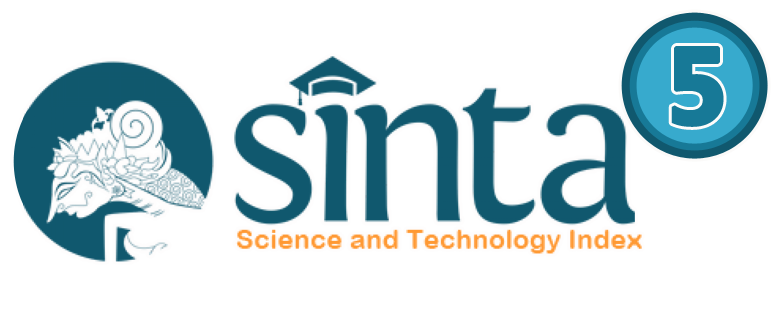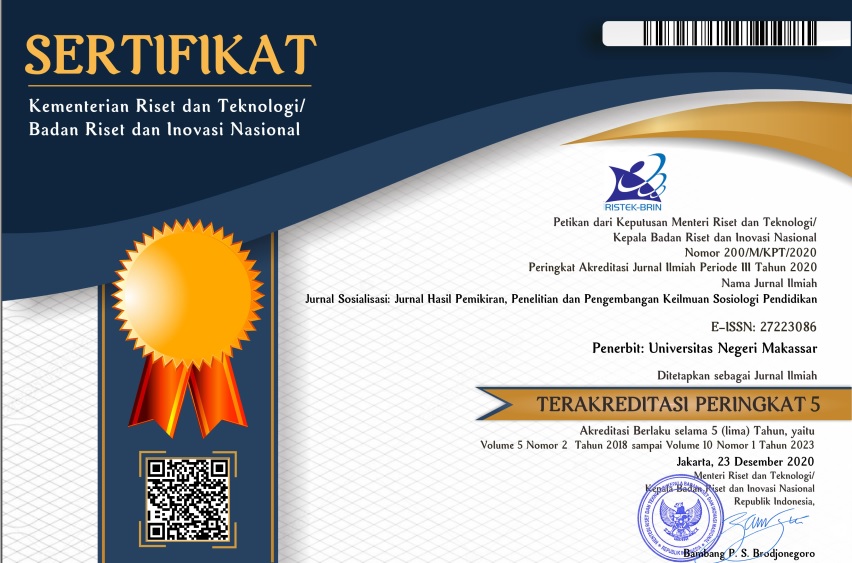Kejayaan Abbasiyah: Pembentukan Sistem Kerajaan yang Mengubah Sejarah
(1) Universitas Islam Negeri Alaudin Makassar, Sulawesi Selatan, Indonesia
(2) Universitas Islam Negeri Alaudin Makassar, Sulawesi Selatan, Indonesia
(*) Corresponding Author
DOI: https://doi.org/10.26858/sosialisasi.v1i3.56000
Abstract
This research examines the development of Islamic education from the era of Prophet Muhammad SAW through three significant regimes - Khulafaur Rasyidin, Umayyad, and Abbasid - with a special focus on the Abbasid period. It studies how Islamic education evolved from the foundational phase during Prophet Muhammad's time, through its developmental phase in the Khulafaur Rasyidin era, to its zenith during the Abbasid dynasty, known as the golden age in all fields, including education. This study delves into how Islamic educational institutions flourished and played a role in creating new civilizations and cultures among Muslims. This research hopes to inspire the modern Muslim community to adapt and modify effective educational approaches, creating better and more effective educational institutions to prepare students for the future.
Keywords
Full Text:
PDFReferences
Ben‐Dor, G. (1996). The uniqueness of islamic fundamentalism. Terrorism and Political Violence. https://doi.org/10.1080/09546559608427356
Hasanah, U., & Verawati, H. (2022). Pendidikan Islam Multikultural: Analisis Historis Masa Dinasti Abbasiyah. ASANKA: Journal of Social Science and Education, 3(2), 198–221.
Mansir, F., & Karim, A. (2020). Islamic education learning approaches in shaping students’ emotional intelligence in the digital age. Hayula: Indonesian Journal of Multidisciplinary Islamic Studies, 4(1), 67–86.
Masykuroh, S., & Saputra, N. A. (2023). Potret Kejayaan Umat Islam dalam Ilmu Agama, Falsafat dan Sains (Belajar Dari Pengalaman Abbasiyah). El Tarikh: Journal of History, Culture and Islamic Civilization, 4(1), 59–69.
Naumkin, V. (2003). Militant Islam in Central Asia: The Case of the Islamic Movement of Uzbekistan. Berkeley Program in Soviet and Post-Soviet Studies, Institute of Slavic, East European, and Eurasian Studies, UC Berkeley.
Priatna, T. (2020). Demography of Madrasah Diniyah Takmiliyah and revitalizing the institutional function of Islamic education. Journal of Southwest Jiaotong University, 55(1).
Rifuddin, B., Ilham, D., & Nurdin, K. (2020). Academic Services in Islamic Education Management Study Program The Actualization of the Basic Values of the State Civil Apparatus at IAIN Palopo. International Journal of Asian Education (IJAE) by READ Institute, 1(2), 81–94.
Rozak, A. (2020). Budaya Literasi Masyarakat Islam Klasik Periode Dinasti Abbasiyah. Jurnal Penelitian Agama, 21(2), 214–228.
Rusydi, I. (2023). The Roles of The Persian People To The Glory of The Abbasiyah Dynasty In The Time Of Caliph Harun Al-Rashid (786-809 AD). Risalah, Jurnal Pendidikan Dan Studi Islam, 9(3), 1265–1273.
Setyoko, A., Tunas, B., & Sunaryo, W. (2016). Evaluation of school operational assistance by using CIPP model in Indonesia private Islamic elementary school. International Journal of Managerial Studies and Research, 4(3), 44–49.
Sulhadewihana, S., & Salmiwati, S. (2022). Potret Pendidikan Islam Masa Dinasti Abbasiyah dan Kontribusinya Terhadap Pendidikan Islam Masa Sekarang. Tarbawiyah: Jurnal Ilmiah Pendidikan, 6(1), 87–93.
Ucan, A. D. (2019). Improving the pedagogy of Islamic religious education in secondary schools: The role of critical religious education and variation theory. Routledge.
Winarto, W., Syahid, A., & Saguni, F. (2020). Effectiveness the use of audio visual media in teaching islamic religious education. International Journal of Contemporary Islamic Education, 2(1), 81–107.
Article Metrics
Abstract view : 53 times | PDF view : 11 timesRefbacks
- There are currently no refbacks.

This work is licensed under a Creative Commons Attribution 4.0 International License.


































